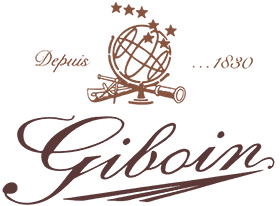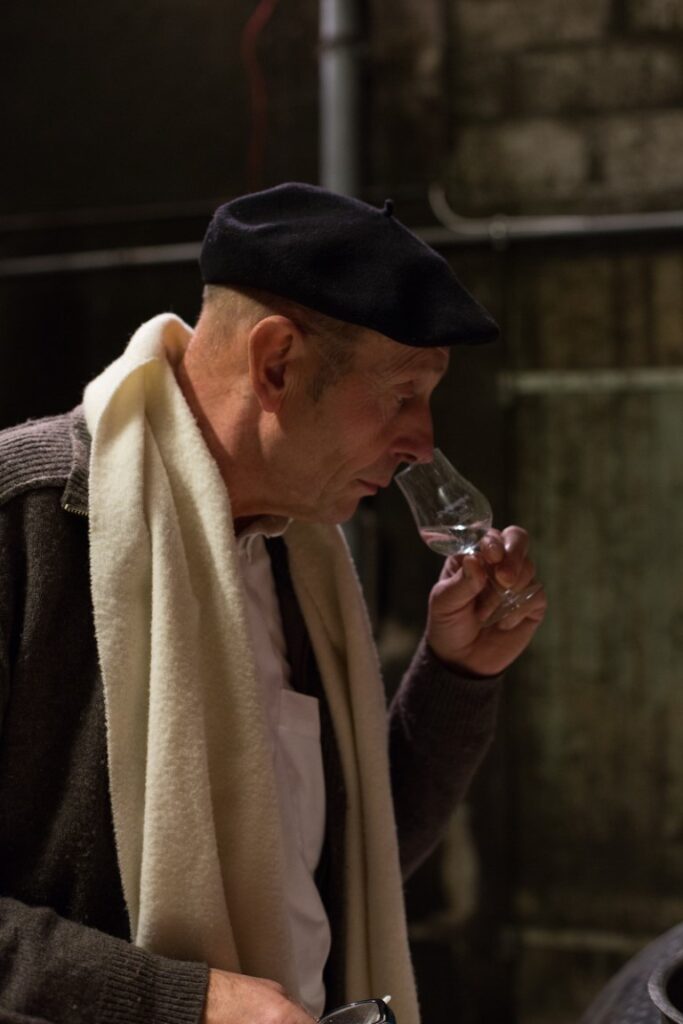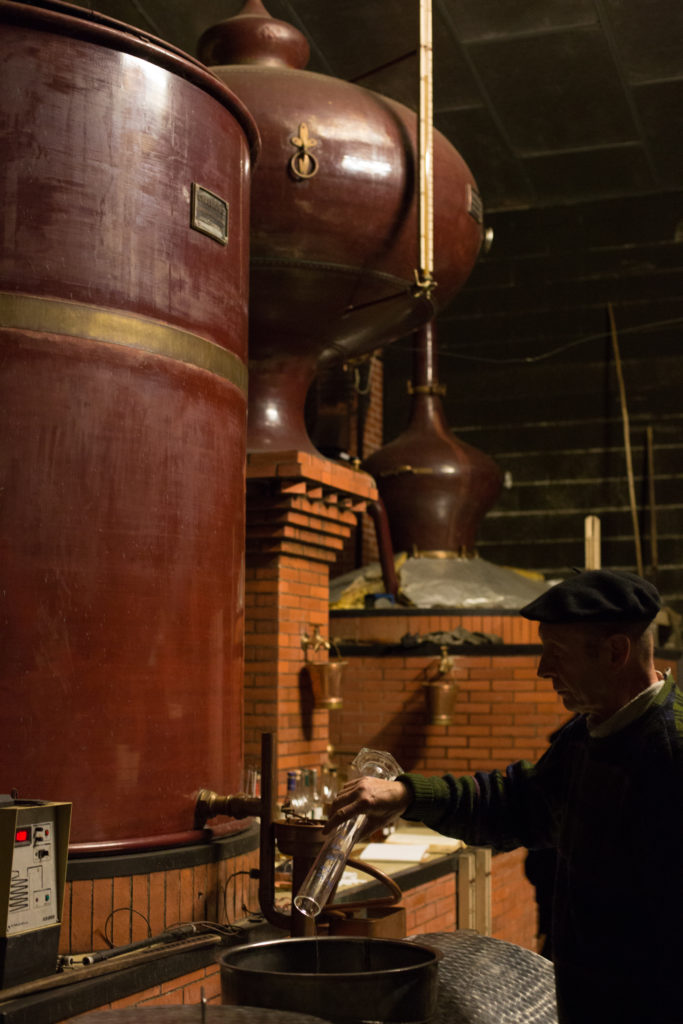Typical 'Charentais' cellars
WHEN WE CAME BACK FROM SCHOOL IN THE 90’S, WE USED TO PUT OUR SLIPPERS ON, TAKE OUR SCHOOLBAG AND RUN AS FAST AS WE COULD TO THE DISTILLERY THROUGH THE COLD AGING CELLARS, WHERE THE TEMPERATURE IS ABOUT +5°C IN WINTER. AS WE REACHED THE DISTILLERY, WE FELT IMMEDIATELY WARM THANKS TO THE VAPORS COMING OUT OF THE POTSTILL. WE USED TO SIT AT OUR FATHER’S MESSY TABLE, TAKE OUR EXERCISE BOOKS OUT AND START OUR HOMEWORK CAREFULLY WATCHED BY OUR FATHER WHILE HE WAS ALSO WATCHING THE DISTILLATION NOT TO MISS THE ‘CUT’
Pierre-Louis Giboin
The cellar master
The aging process follows 3 steps
Extraction
The newly made eau-de-vie is poured into new casks, where it stays about 1 year. Tannins of the oak barrel will be extracted to be shared with the eau-de-vie.
Concentration
Then the eau-de-vie is pourred in 'roux' casks, which have contained several years of eaux-de-vie. This is a transition stage where the eau-de-vie starts digesting wood..
Oxydation
Eaux-de-vie, which are allowed to be named Cognacs, start a long micro-oxygenation process full of many exchanges with ambiant air and wood. The alcoholic strength by volume will start decreasing, the 'bouquet' will get more intense and we start identifying the 'rancio'.




